You'd be surprised how versatile the color can be.
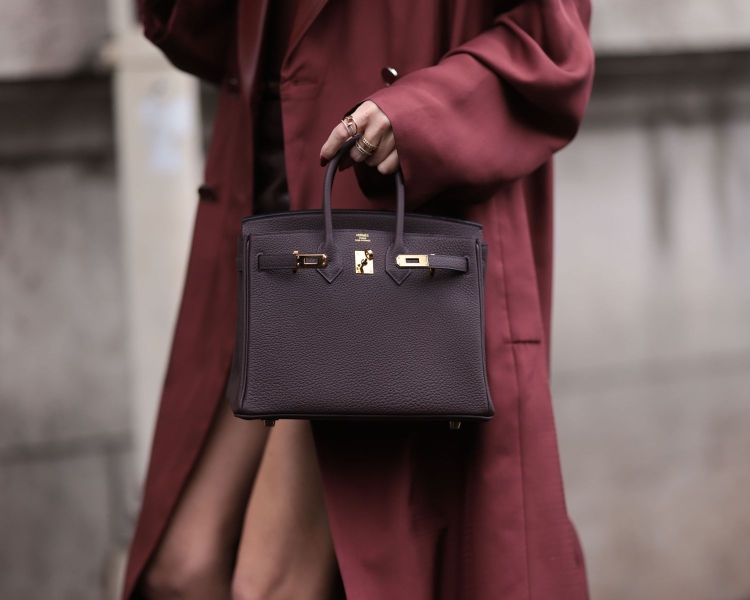
Burgundy (along with its color siblings maroon and wine) is a classic color that can bring a little va-va-voom to a look. There’s a spectrum of burgundy, ranging from deep to bright, and there’s a hue out there that works for just about everyone. Burgundy can be both a neutral when paired with a brighter color, and a pop of color when paired with a neutral like black or gray.
If you're ruminating over a burgundy piece and just don't know how to wear it, or you're still a bit stumped on how to wear the pieces you do have, keep scrolling.
Black
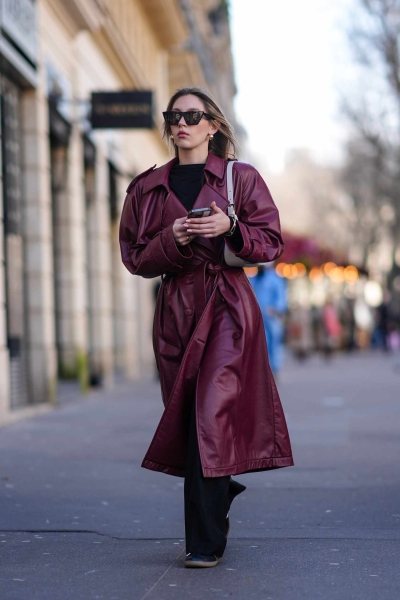
This sounds like an obvious choice, and it is! Black, besides being a color that goes with just about everything, is a nice choice if you have a statement burgundy piece. The coat isn't so bright as, say, red or purple (it's a nice in-between); the black base layer outfit underneath is just a backdrop that shows off the outer layer's rich hue without fighting with it.
White
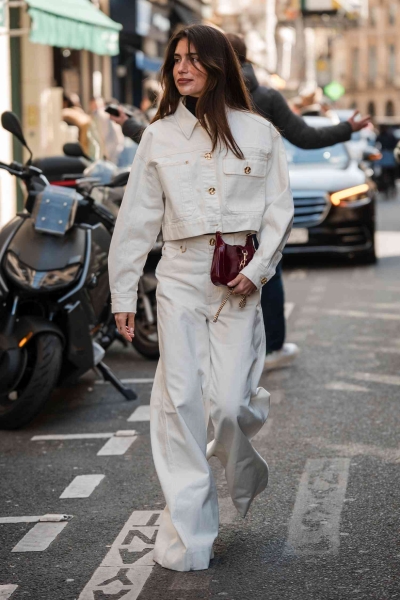
All-white looks give you endless possibilities: You can add in any color with bags, accessories, or shoes. Here, the burgundy bag is a pop of color that is nevertheless pretty neutral relative to something brighter.
Matching your lip color to your bag is a cool, surprising way to make your look cohesive.
Tan
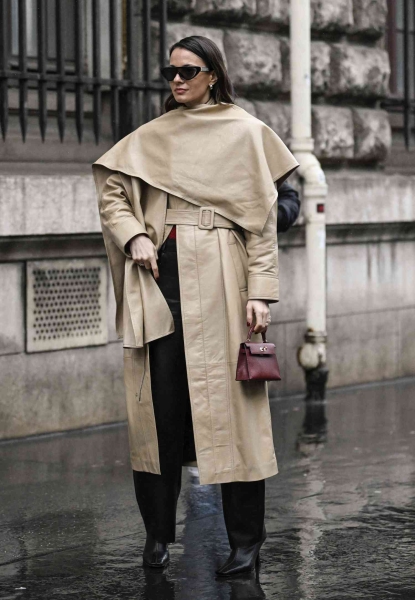
A cool trench goes with anything (you heard it here first!). It's just as neutral as black or white—softer than white, gentler than black—and you can pair it with a whole host of colors. The burgundy bag matches the (mostly unseen) red shirt, and in a brilliant synergy moment, the nails match the bag.
Gray
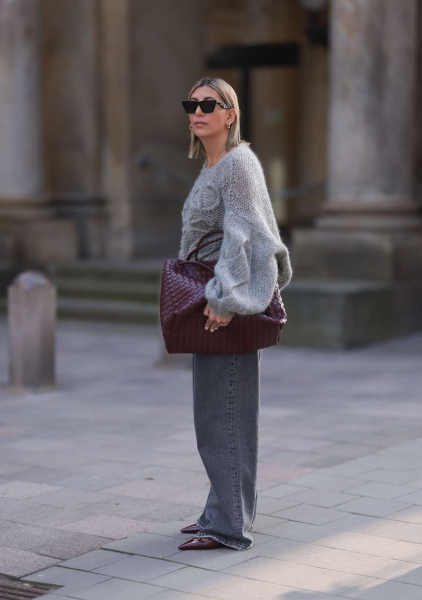
Like its older sister black, gray is a multifunctional neutral. As exemplified in this outfit, there's a whole spectrum of gray, from deep charcoal (in the pants) to light silver (in the top). Burgundy and gray both share a richness and matte softness, so their pairing here is intuitive.
Brown
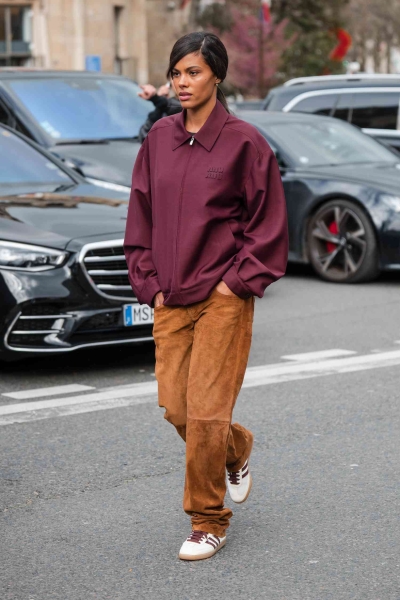
By contrast, pairing burgundy/maroon with a brighter color means that the pants are actually the pop of color, and the jacket actually serves as a neutral. Burgundy would also look stunning with a deeper brown, but this surprise color pairing feels a little more daring and exciting.
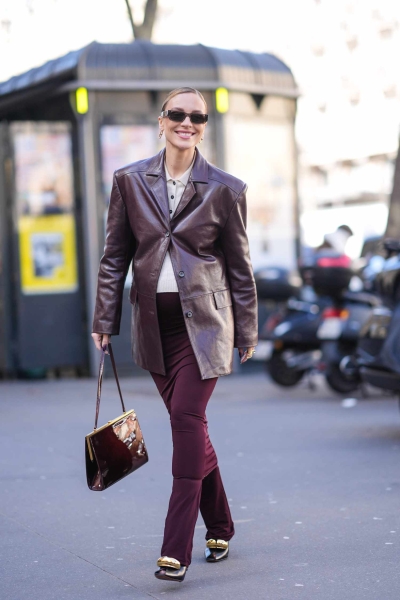
If you like burgundy, I have great news for you: You can wear it head to toe (tonal dressing, or wearing all one color, doesn't have to be limited to black, white, or another neutral). Here, the shoes, bag, coat, skirt, and pants are all burgundy, but the fact that they're not all the same shade of burgundy helps keep it from feeling too monochromatic.
Red
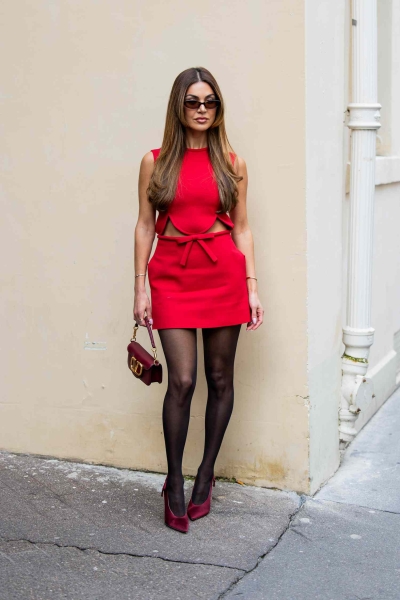
Contrary to what you might be thinking, a polished burgundy can match with a more youthful red. They're close on the color wheel, but consider putting two pieces together to see if they complement.
Pink

If red feels like a bridge too far, try a soft pink instead. We get a little matching with the burgundy bag and shoes (which are dark enough to be used in place of black or brown), and then the pink feels like the standout piece. It takes a specific hue of burgundy to pull this off, so play around with it.
Blue
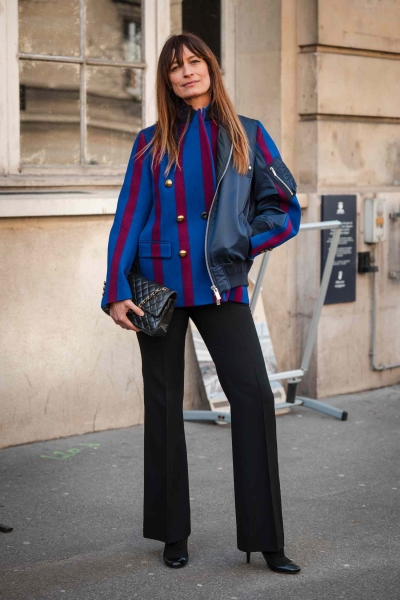
Caroline de Maigret is a French style icon for the ages, which means she can take a bright burgundy and blue striped jacket and make it look effortless. The two colors marry well together, but the trick is to pair two equally vivid hues.
Denim

A softer denim also works well with a striking burgundy piece like this coat. Classic blue jeans can either be a neutral or a pop of color, and they can act as a "bridge" between two very different hues. Here it makes the black top look less intense and brings out the brightness in the leather jacket.
Yellow
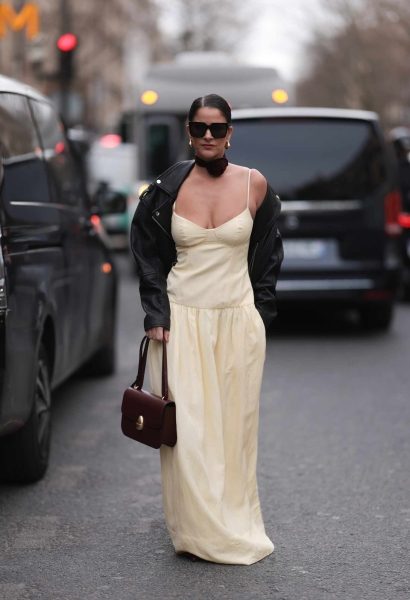
Picking the "right" yellow is an important step to wearing the tricky hue. This pretty, buttery yellow is just a few shades off from white, which means you can wear the dress as if it were neutral. The dark burgundy matches with the dark leather jacket. The rosette at the neck is also burgundy!
Green
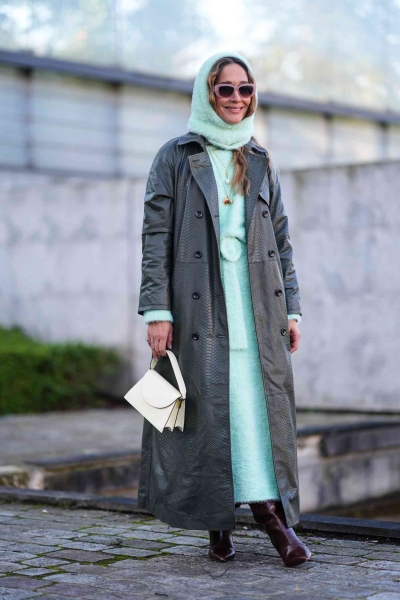
Who knew that teal could be a good fit with burgundy?! Even when you're going with a maximalist color scheme, picking complementary colors (gray and burgundy for neutrals, teal and white as pops of color) will help the contradictory elements play nicely together.
Olive
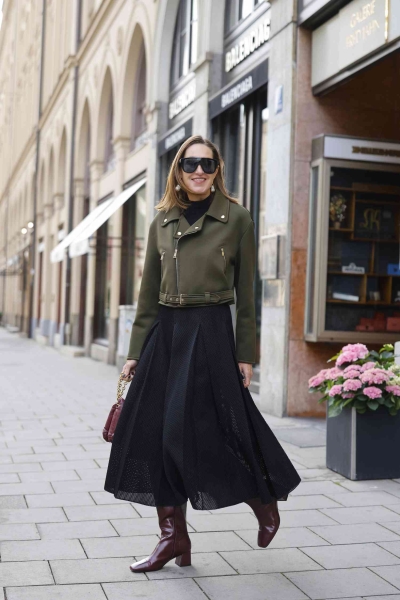
Here, we're working with dark colors of all sorts: Think of it as chaotically wearing all your different neutrals. Olive, black, and burgundy can all work well, provided that no one color is overshadowing another—and that the overall effect is cohesive lengthening instead of disjointed.

